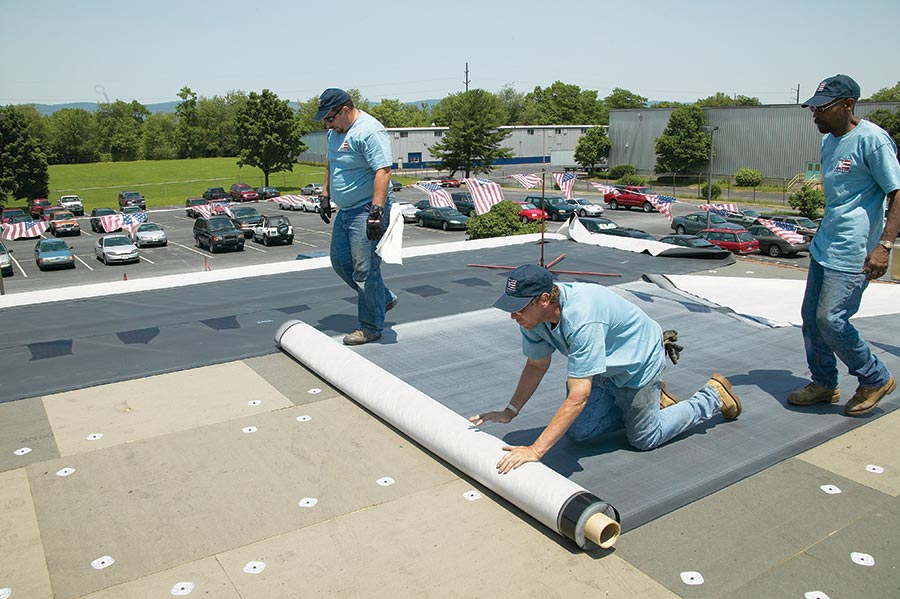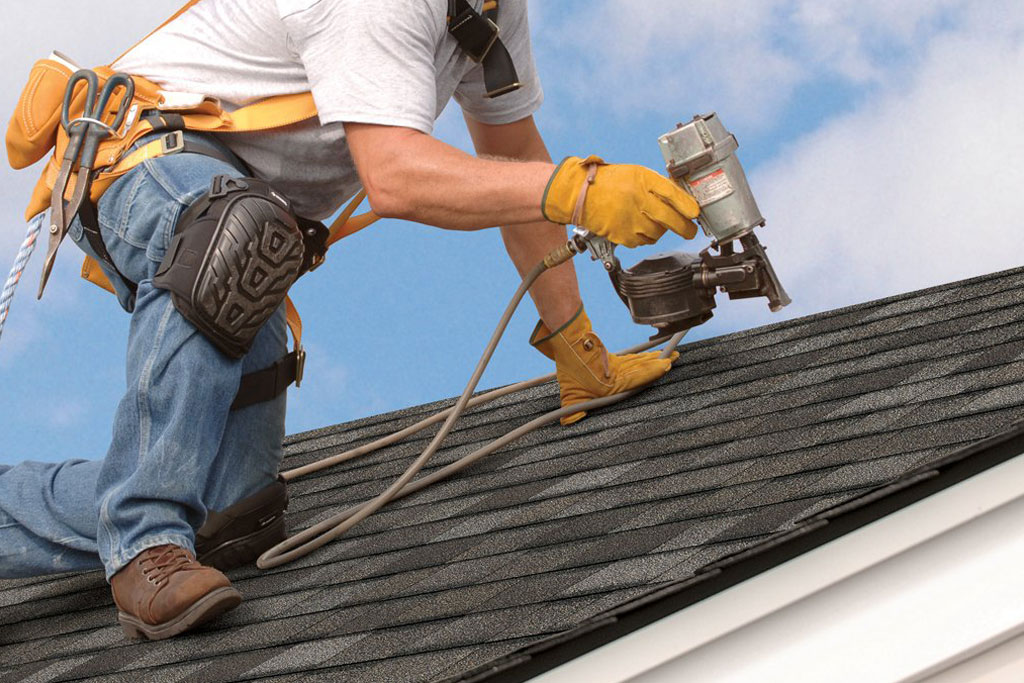Specialist Tips for a Remarkable Roofing Apartment Roofing Installation Process
The installment of a level roof covering is a vital undertaking that requires precise planning and implementation to ensure durability and efficiency. Key considerations consist of selecting the suitable materials, understanding the details type of flat roofing, and adhering to industry requirements during the installment procedure.
Recognizing Flat Roofing Types
When taking into consideration a flat roof covering installation, it is necessary to understand the numerous types available, each offering distinct benefits and negative aspects. One of the most common level roofing kinds consist of built-up roof coverings (BUR), modified asphalt roof coverings, and single-ply membranes.
Built-up roofs consist of numerous layers of asphalt and felt, providing outstanding waterproofing and toughness. These roofing systems are often liked for property applications due to their ease of installment and repair work.
Single-ply membranes, such as EPDM, TPO, and PVC, are gaining popularity for their lightweight nature and ease of installation. EPDM, known for its durability, is particularly reliable in varying climates, while TPO and PVC supply superior energy efficiency and reflectivity.
Eventually, the selection of flat roof covering type will depend on variables such as the building's design, local climate, and spending plan considerations. Comprehending these choices is important for making sure a successful installation that satisfies specific demands and demands.
Necessary Tools and Materials
To accomplish an effective flat roof installment, having the right tools and materials is extremely important. A well-appointed installment group makes certain efficiency and quality throughout the process. Key devices include a measuring tape for precise dimensions, an energy knife for cutting roof covering materials, and a pneumatic nail gun for protecting membranes. Additionally, a warmth welder is essential for polycarbonate roofing systems, while roofing rollers assist in accomplishing correct bond.
In regards to materials, choosing high-grade roof membrane layers is crucial. Choices such as EPDM, TPO, or PVC needs to be chosen based upon environment, budget, and long-lasting efficiency. Adhesives and sealers proper for the picked membrane type are likewise essential to make certain and avoid leaks longevity. For insulation, rigid foam boards or spray foam can boost power efficiency and provide additional structural support (Flat Roof Installation in Cuyahoga Falls).
Safety and security gear, consisting of harnesses and hard hats, should not be overlooked to secure employees during installment. Having a dependable ladder or scaffolding is important for safe access to the roof covering. Spending in these crucial devices and products will result in a more reliable, reliable, and inevitably successful flat roof installment.
Preparing the Roof Covering Surface Area
Before laying down any kind of roof covering materials, it is vital to prepare the roofing system surface area extensively to make sure optimal adhesion and long life of the setup. This preparation procedure entails several essential actions that must not be ignored.

Additionally, check for wetness and make certain that the surface is completely dry. click reference Any type of entraped dampness can result in mold development and endanger the honesty of the roof. If required, utilize a dampness meter to validate dryness.

Step-by-Step Setup Process
With the roofing system surface correctly prepared, the focus shifts to the detailed installment procedure that will guarantee a long lasting and reliable flat roof. Begin by outlining your products, including the membrane layer, glue, and any type of needed tools such as rollers and utility blades. Procedure and cut the roofing membrane to fit the roof covering measurements, enabling overlaps at seams.
Following, use the adhesive according to the producer's specs, making sure also protection for ideal bonding. Carefully place the membrane onto the adhesive, beginning with one end and functioning your way throughout. Utilize a roller to eliminate air bubbles and make certain optimum bond.
When the membrane is securely in position, concentrate on sealing seams and sides (Flat Roof Installation in Cuyahoga Falls). Utilize a suitable sealer or tape to reinforce these locations, avoiding water infiltration. Set up flashing around infiltrations, such as smokeshafts or vents, to supply additional defense
Maintenance and Examination Tips

Begin by carrying out aesthetic inspections a minimum of two times a year, preferably in spring and fall, to determine any type of indicators of damages such as splits, blisters, or ponding water. Pay special interest to joints and blinking, as these locations are prone to leaks.
Get rid of particles, such as leaves and branches, from the roof covering surface and drain systems to avoid water buildup. Flat Roof Installation in Cuyahoga Falls. Ensure that downspouts and gutters are clear to help with appropriate water circulation
Furthermore, look for any type of indications of mold or algae development, which can jeopardize the roofing system's stability. Resolve them without delay to avoid a lot more considerable damages. if you see any issues.
Consider engaging a professional roofing service provider for thorough assessments and upkeep services. They can provide insights on fixings, layer applications, and various other preventative procedures to improve your flat roofing system's sturdiness. Prioritizing maintenance will certainly secure your investment and provide comfort.
Final Thought
Finally, sticking to careful preparation and installation strategies is important for achieving a remarkable level roofing system. Understanding the numerous types of level roof materials and making use of premium products boosts sturdiness and performance. Routine maintenance and helpful hints examinations post-installation serve to expand the roofing's lifespan and protect against potential concerns. Engaging specialists for setup and maintenance even more ensures that finest practices are complied with, ultimately adding to a long-lasting and efficient flat roof remedy.
The installation of a level roof covering is a crucial endeavor that calls for meticulous preparation and execution to guarantee toughness and effectiveness. Key considerations consist of picking the ideal materials, understanding the specific type of flat roofing, and sticking to sector standards during the setup procedure.To attain an effective level roof covering installation, having the right tools and materials is critical. Spending in these necessary tools and products will lead to an extra effective, efficient, and try here eventually effective level roofing system setup.
With the roofing surface area appropriately prepared, the emphasis moves to the detailed setup process that will guarantee a resilient and efficient flat roofing system.